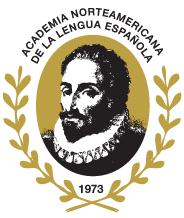With a solid and consolidated Latin American community, the United States of America has the second largest Spanish speaking population outside Spain, being the first one in Mexico. According to the North American Academy of the Spanish Language (ANLE, Spanish acronym), over 50 million people speak Spanish in the USA. That said, is the Spanish language blooming there? What is its current situation like? What challenges are awaiting Spanish speakers ahead in the US?
In a recent interview to Gerardo Piña-Rosales, director of the ANLE, recently published in the cultural section of “El País” newspaper, he analyzes the situation of the Spanish language in USA, its specific characteristics and the challenges involved.
Spanish Language in the USA Today
According to Gerardo Piña-Rosales, Spanish is not flourishing in the US currently but its situation is not negative either. Many people speak it and a vast majority of them are well educated, which definitely contributes to the quality of the language spoken there.
There are quite a few signs of the positive status the Spanish language is currently enjoying in the US. On the one hand, he states that many U.S.-born young people of Latin American parents who stopped speaking Spanish at home are increasingly interested in learning the language. On the other hand, he mentions the fact that many politicians have incorporated Spanish in their speeches and that several TV networks offer content exclusively for Spanish speakers.
However, the Spanish spoken in the US has its own characteristics; it is rich in words and expressions derived from the American English that affect not only the vocabulary used but the way in which sentences and phrases are organized as well. These estadounidismos, as the ANLE calls them, are a clear reflection of the way Latin Americans living in the US try to convey the cultural reality of the country by using their mother tongue. In other words, estadounidismos are words or uses peculiar to Spanish spoken in the United States of America.
Spanglish and its Connection with the Spanish Language in the USA
Mr. Gerardo Piña-Rosales is quite positive when speaking about Spanglish and its connection with the Spanish Language in the USA. He says that those who do not master Spanish need to use Spanglish in order to communicate with other members of the Latin American community in a language different from English. He is convinced that it is a way of depriving themselves of integrating fully with the community but he says that it has a very little influence on the consolidation of Spanish in the US. According to his own words, it should be seen more as a social phenomenon than as a linguistic one.
Speaking Spanish in the USA: Present and Future Challenges
Mr. Gerardo Piña-Rosales is convinced that the main challenges that the Spanish language faces and will face in the US are related to the presence and growth of certain “hispanophobic” groups that reject or threaten those that speak Spanish. Some of these groups are extremely powerful and can exercise a lot of influence amongst important political and economic sectors.
The other challenge is politically related. If there is no significant and positive economic change soon and if the political climate turns sharply rightwards, it is undeniable that English-only movements will become stronger and, therefore, the space allowed for Spanish speakers will be greatly reduced.












